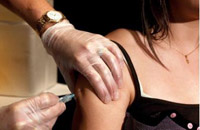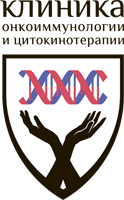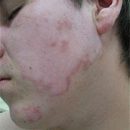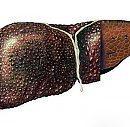Hypertensive crisis - the thing itself is unpleasant. In addition to all, the development of this disease may indicate the presence of a tumor, called «Feochromocytoma». Read more about this and other symptoms of feochromocytomas, read in this article.
Content
What is a feochromocytoma
Theochromocyte is called a tumor, mainly benign, consisting of brain layer cells of adrenal glands.
This tumor is more often evolving in middle-aged women. The disease occurs at any age, but more often at 25-50 years. In childhood, Feochromocytoma is more common in boys. In general, this tumor is rare enough.
About 10% of cases of the disease fall on a family form when the disease occurs in the case of the same disease at least one of the parents, regardless of gender.
 The most permanent symptom of feochromocytomas is arterial hypertension (an increase in blood pressure), which proceeds most often with periodic hypertensive crises. During the crisis period, there is a sharp increase in blood pressure, and in the intercrive period, blood pressure is normalized.
The most permanent symptom of feochromocytomas is arterial hypertension (an increase in blood pressure), which proceeds most often with periodic hypertensive crises. During the crisis period, there is a sharp increase in blood pressure, and in the intercrive period, blood pressure is normalized.
A few less often is found form characterized by a constant increase in blood pressure, against the background of which crises are developing. In addition, pheochromocytoma can flow without crises with steadily high arterial pressure.
Hypertensive crises are often accompanied by neuropsychiatric, exchange disorders, gastrointestinal symptoms and blood disorders (paroxysmal form of the disease).
During the attack, there is a feeling of fear, anxiety, trembling, chills, skin pallor, headache, sore pain, pain in the heart area, rapid heartbeat, violation of the rhythm of the heart (which the patient evaluates as a feeling of sudden «failure»), nausea, vomiting, increase body temperature, sweating, dry mouth. Not necessarily the emergence of all listed symptoms, they can vary. Changes in blood test are observed: an increase in the content of leukocytes, lymphocytes, eosinophils, an increase in the content of glucose (sugar).
Crisis ends as quickly as it starts. Blood pressure returns to initial values, the skin's pallor is replaced by redness, sometimes there is plenty of sweating. Up to 5 liters of light urine. After the attack, the general weakness is preserved for a long time,.
In severe cases, crisis can be complicated by hemorrhage into the retina, impaired cerebral circulation (stroke), edema of the lungs.
The attacks arise, as a rule, suddenly and can be provoked by the hypoint, physical or emotional tension, sharp movement, intake of alcohol or some drugs. The frequency of attacks is different: from 10 - 15 crises a day to one for several months. The duration of the attack is also unequal - from a few minutes to several hours.
With a stable form of the disease, there are constantly high blood pressure, disorders from the kidneys, changes in the eye dna (what an oculist can say). Enhanced excitability, mood variability, fatigue, headache.
Symptoms such as rapid heartbeat, sweating, diarrhea (diarrhea), weight loss, occurring at a peuochromocytoma manifestation of the increase in metabolism due to the production of adrenaline tumor and are not associated with a disorder of the thyroid gland (which has similar manifestations). In addition, a violation of carbohydrate exchange is often developing, which is manifested in increasing blood glucose levels.
With a malignant tumor - Feochromoblastoma - Frequently significant loss, abdominal pain. It is possible to develop diabetes.
Generally Treatment of Foohromocytoma Surgical - Tumor Removal. But conservative (using medicines or non-surgical procedures) is applied to the removal of symptoms of the crisis, to prepare for operation and reduce the severity of the manifestation of disease.








